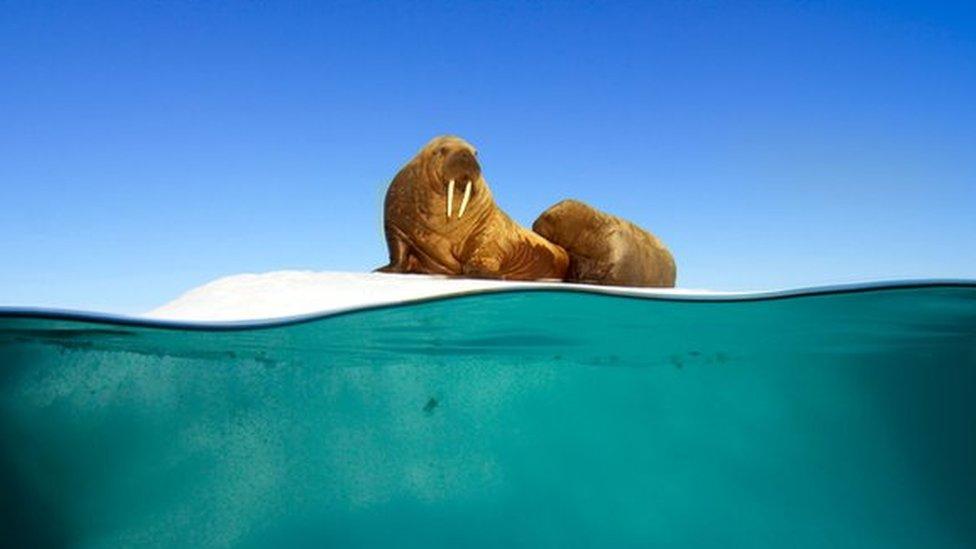Blue Planet II: What's happening in week four?
- Published
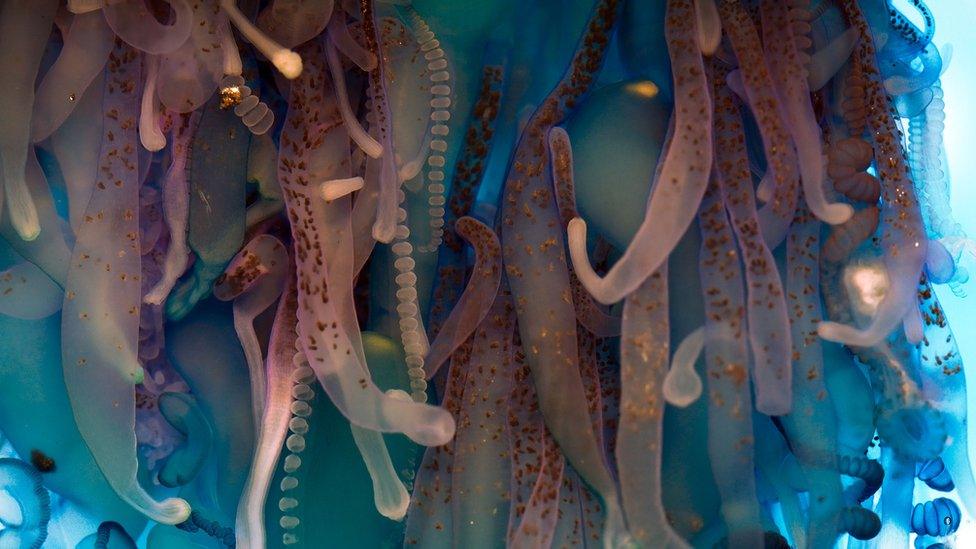
Portuguese man of war use the power of wind to bring terror to fish nearby
Last week was all about shallow, coral reefs. But this week, Blue Planet is heading into the wide ocean.
Far from shore, kilometres deep, with almost nothing to eat, this vast stretch of ocean is home to some of the largest and most spectacular creatures on Earth.
Using special, pressure-proof cameras, the team were able to get amazing pictures from kilometres below the water's surface.
Here's what's coming up...
A hungry mobula ray
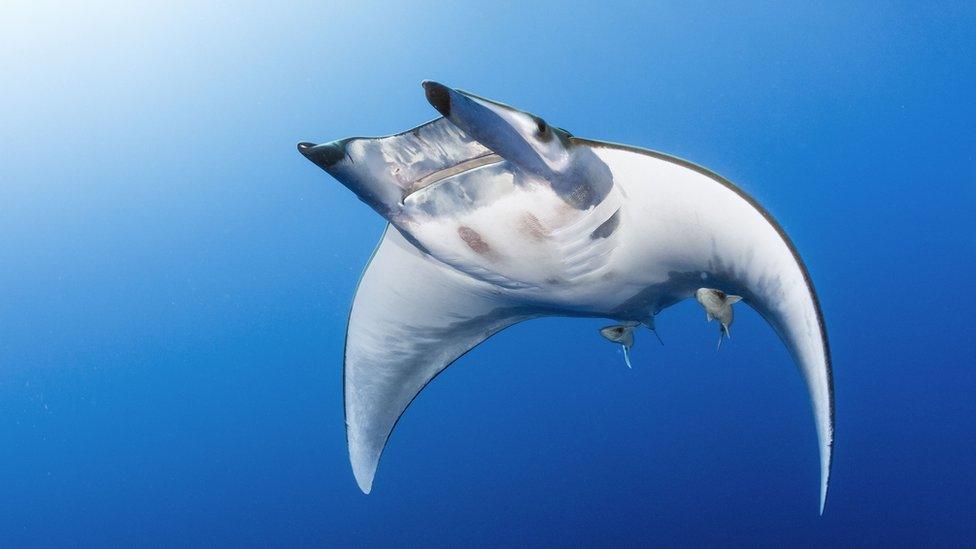
Mobula rays (also known as devil rays) were filmed for the very first time eating fish in the Pacific. Previously it was thought these rays only ate tiny plankton. But the team managed to film the rays hunting and eating lanternfish.
Lonely dolphins
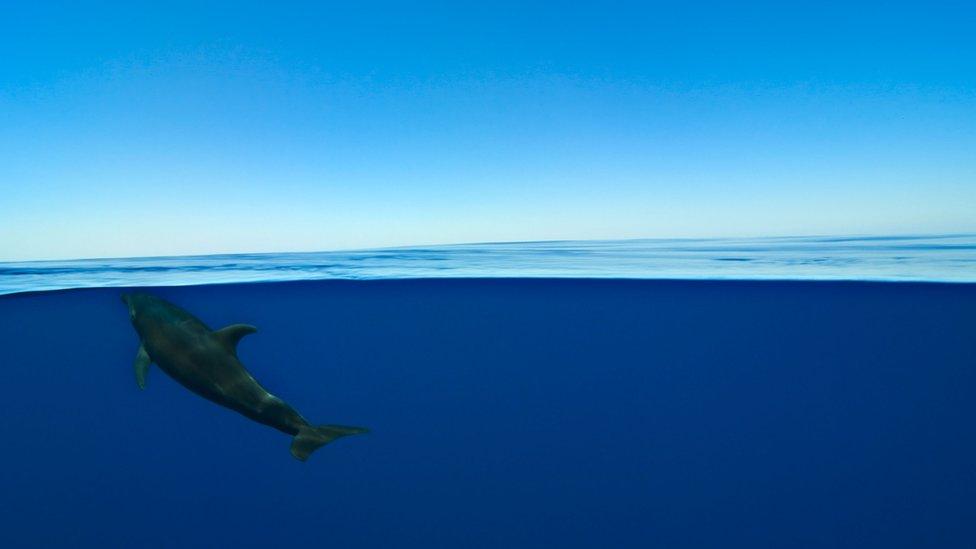
The 'Big Blue' is an enormous oceanic desert in which a dolphin by itself can travel for days, seeking out food or company. The team filmed this dolphin using Blue Planet II's special camera case, the Megadome. They were often searching areas the size of Belgium to find pods of dolphins in the vast Pacific ocean.
Portuguese man of war
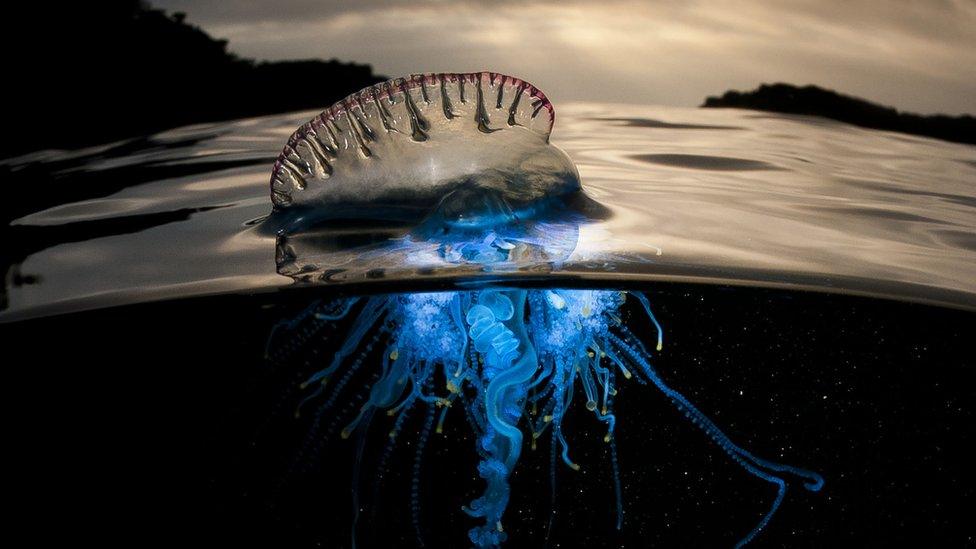
The venomous Portuguese man-of-war is not a jellyfish but a siphonophore - which means isn't just one animal but lots of tiny ones that all work together.
It is also known as 'floating terror' as it sails with the wind, trailing tentacles that can deliver a vicious sting - painful to humans but paralysing for fish.
Sperm whale taxi
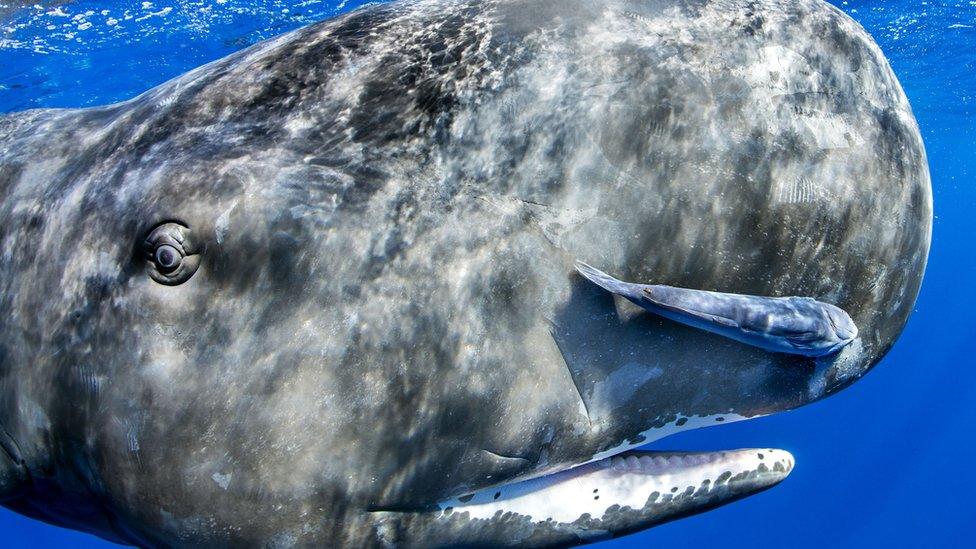
Sperm whales in the Indian Ocean are seen carrying passengers on their bodies - suckerfish called remora that attach themselves to the whale with a suction plate on the top of their head.
And with special pressure-proofed cameras, the team film record-breaking feats of endurance as sperm whales hunt for squid a kilometre down in the ocean.
Yellowfin tuna
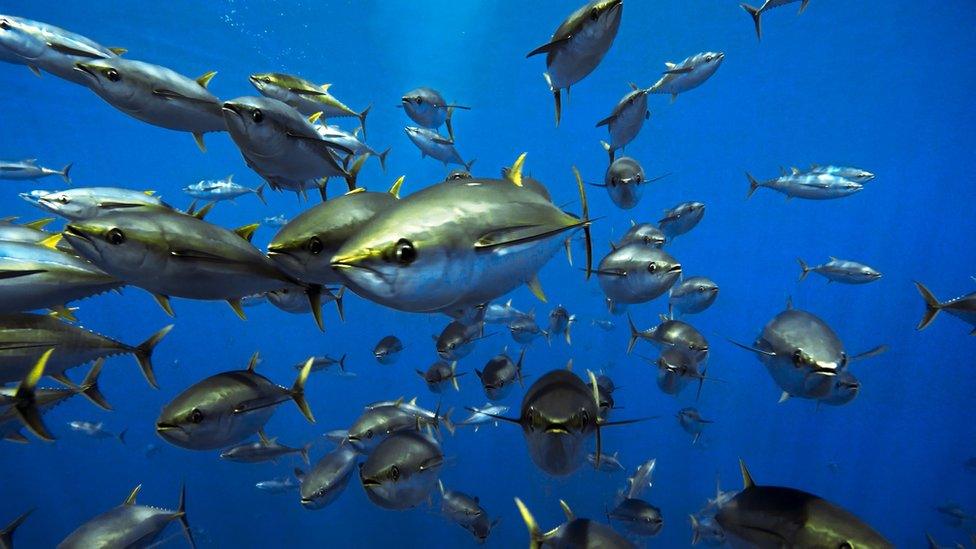
These predators only live in the open ocean, pursuing their prey at speeds of up to 40 miles an hour. Wow - that's fast.
These tuna were filmed using a camera towed behind a boat in the Pacific Ocean off Costa Rica.
- Published26 October 2017
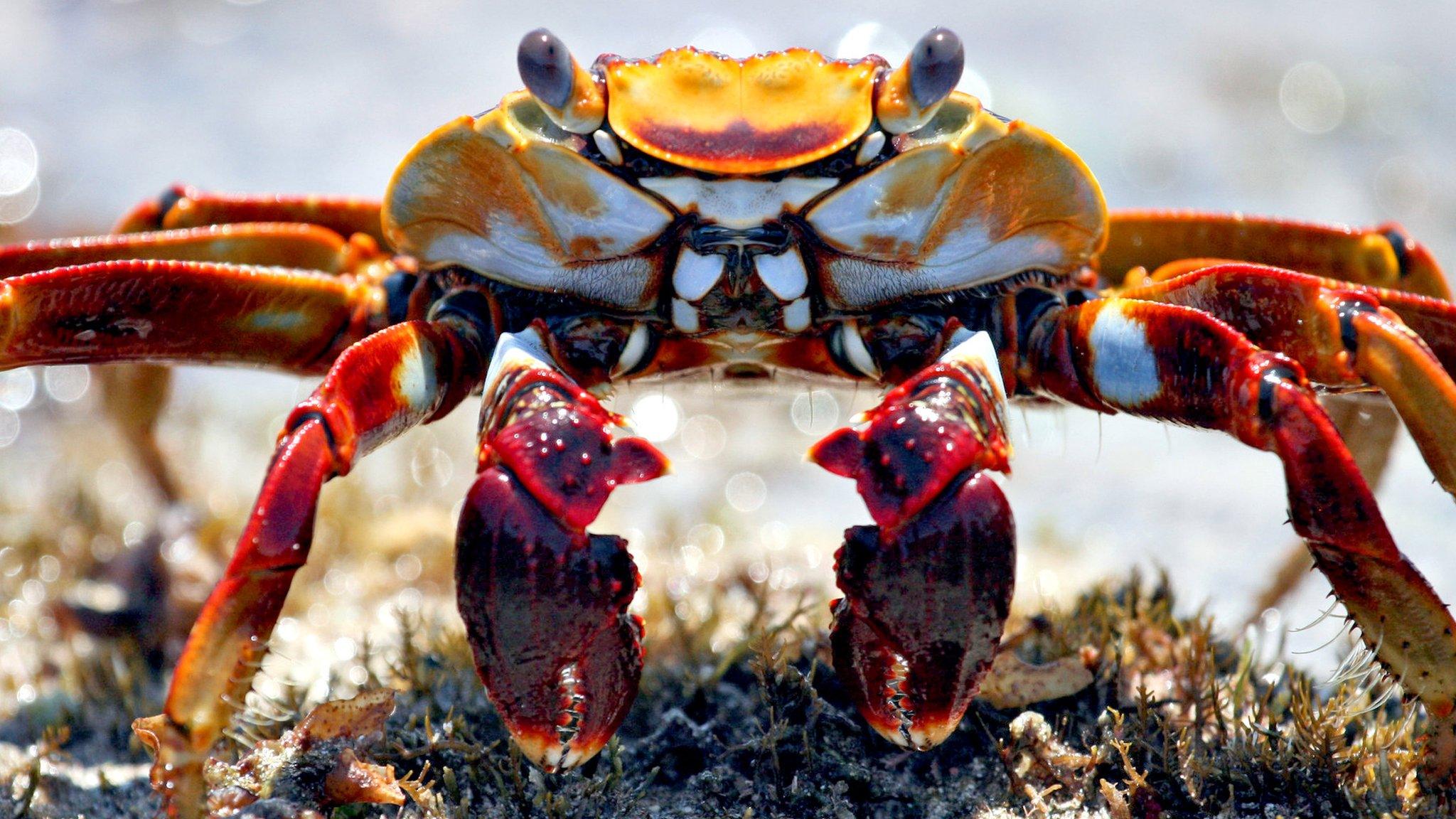
- Published27 October 2017
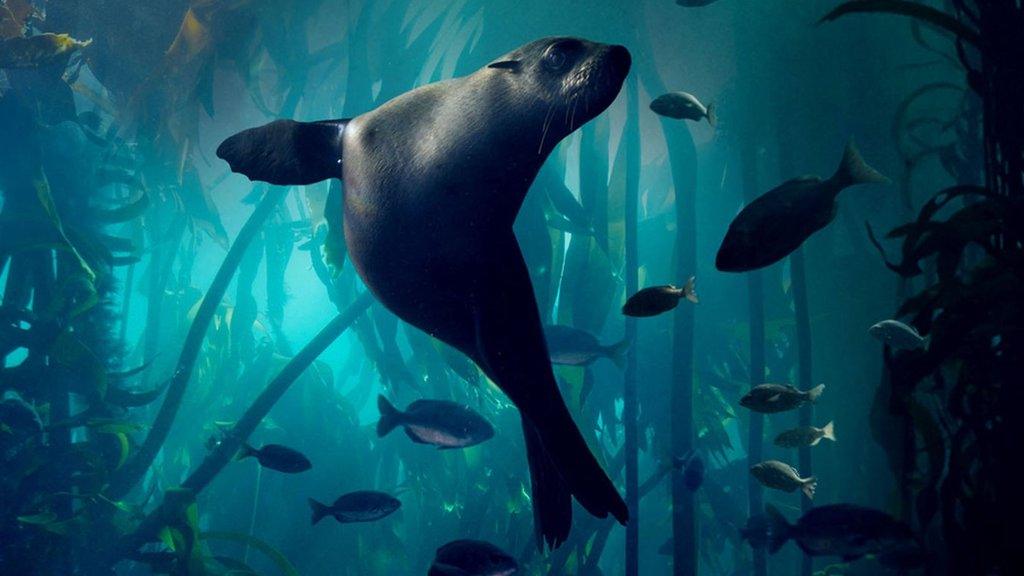
- Published30 October 2017
